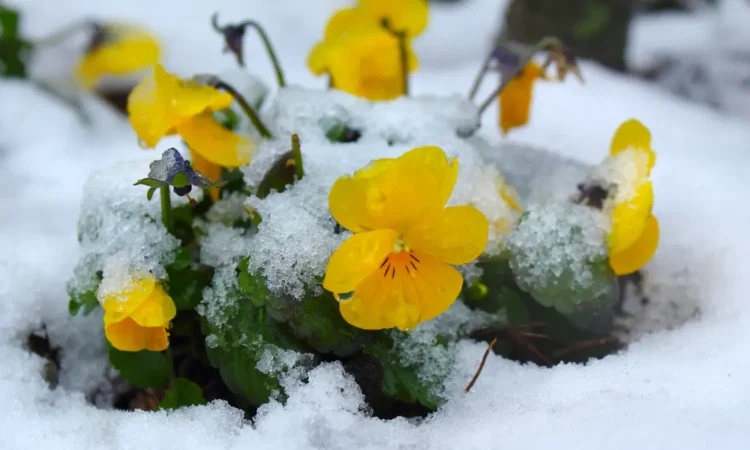During the winter months, the garden may seem dull and lifeless. But with the right selection of flowers, it is possible to create a stunning winter garden full of color and life. Winter flowers come in all shapes and sizes – from small bulbs to colorful perennials and festive holiday bouquets. A lot of them are easy to take care of, and some are so strong they bloom even when it’s really cold outside. Here are 40 flower ideas for flower garden in winter to help bring your garden to life.
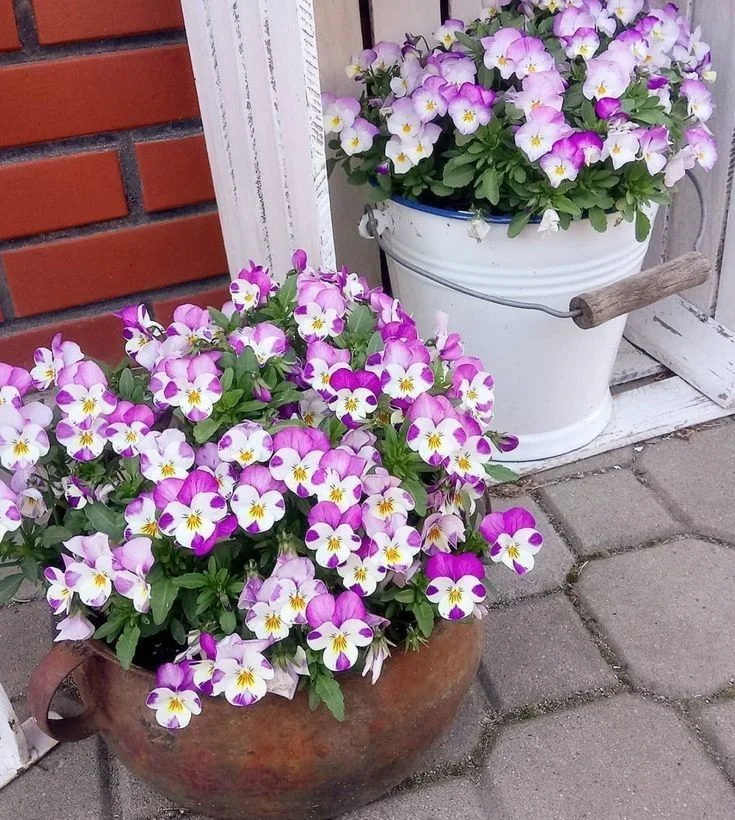
1. Pansies and Violas
- Scientific Name: Pansy – Viola × wittrockiana, Viola – Viola spp.
- Size: Pansies and violas usually grow to be about 6-9 inches tall and spread 9-12 inches wide.
- Details: Pansies and violas are lovely flowers with colorful faces. They’re some of the first flowers for flower garden in winter. Plant them in soil that drains well and in spots where they get some shade, although they can handle a bit of sunlight.
- Best Time to Plant: Pansies and violas like cooler weather. It’s best to plant them for winter flowers in late summer or early fall. In colder areas, you can plant them in early spring for blooms in late spring and early summer.
2. Snowdrops
- Scientific Name: Galanthus spp.
- Size: These delicate flowers usually reach a height of 3-6 inches.
- Details: Snowdrops are little, bell-shaped flowers for flower garden in winter that usually bloom twice a month. They thrive in well-draining soil and partial shade. Plant them in clusters for a charming display.
- Best Time to Plant: Snowdrops are planted in late summer or early autumn, just as the weather starts to cool down.
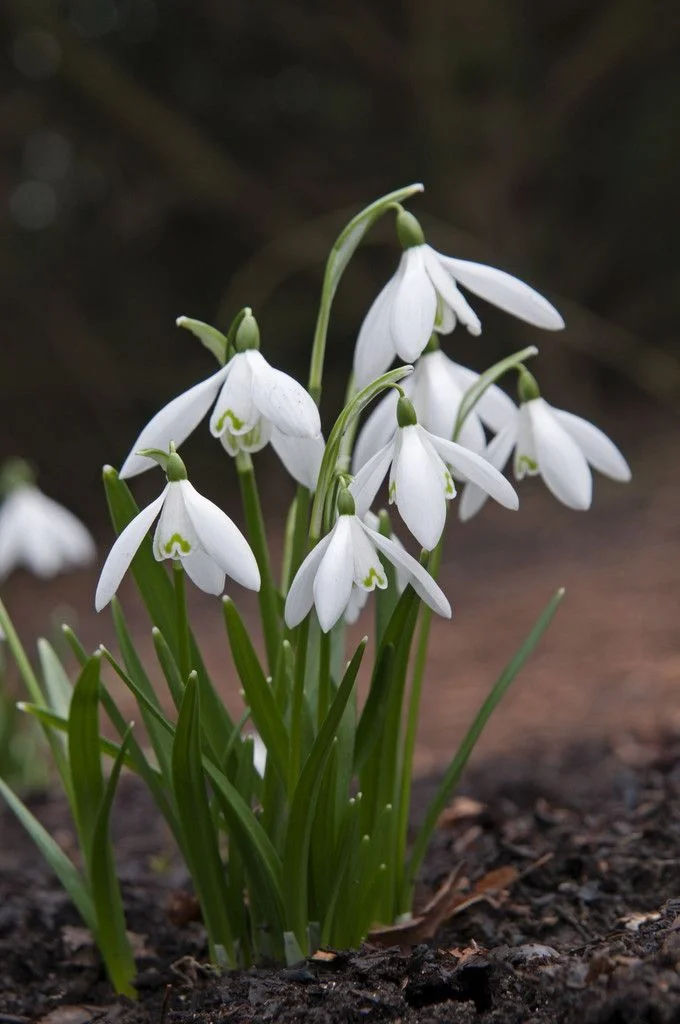
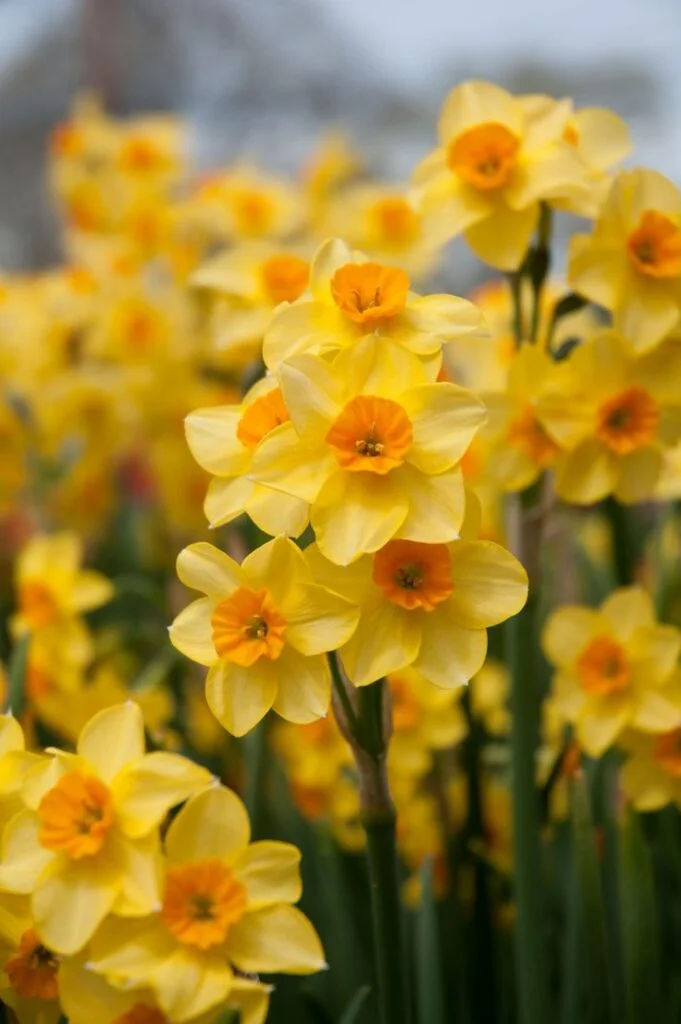
3. Daffodils
- Scientific Name: Narcissus spp.
- Size: Daffodils can be different sizes, but, on average, they grow to be 6-24 inches tall.
- Details: Daffodils are lively, trumpet-shaped flowers for flower garden in winter and known for their happy yellow colors. Put them in soil that drains well and make sure they get sunlight or partial shade. These tough flowers bloom from late winter to early spring, bringing bright colors to make your garden look beautiful.
- Best Time to Plant: It’s best to plant daffodils in the fall, a couple of weeks before the first really cold weather comes.
4. Hellebores
- Scientific Name: Helleborus spp.
- Size: Hellebores usually grow to be 12-24 inches tall.
- Details: Hellebores, also called Christmas or Lenten Roses, are strong flowers with special, cup-shaped blossoms. Plant them where the soil drains well, and they’ll do well in shady spots. These plants are best for flower garden in winter because they making your garden look lovely during the colder months.
- Best Time to Plant: Plant Hellebores in late fall or early winter, before the ground freezes.
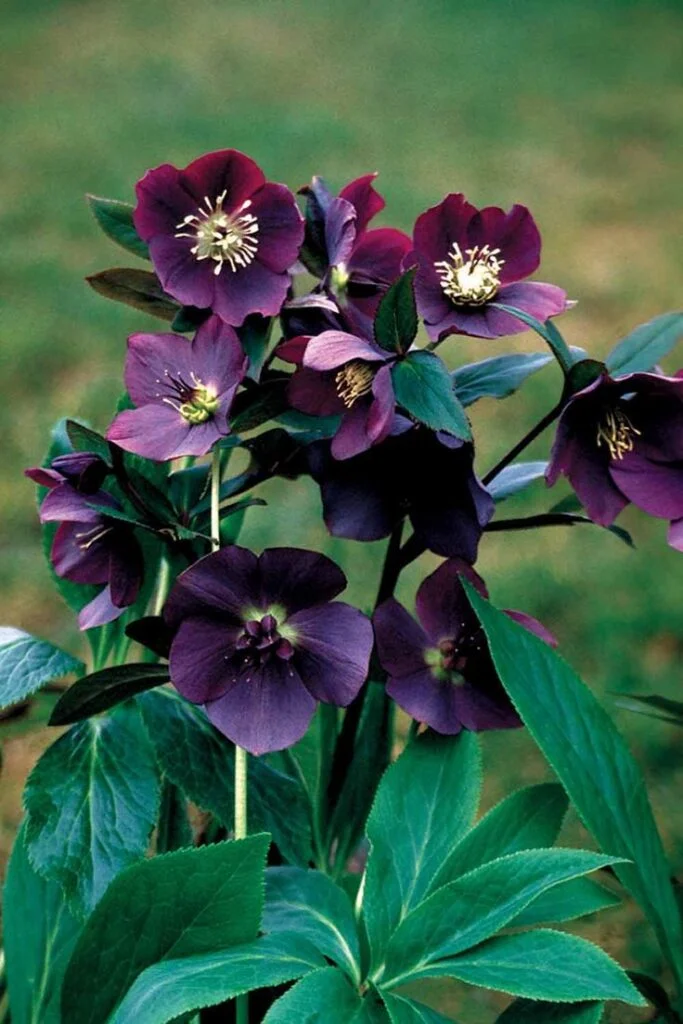
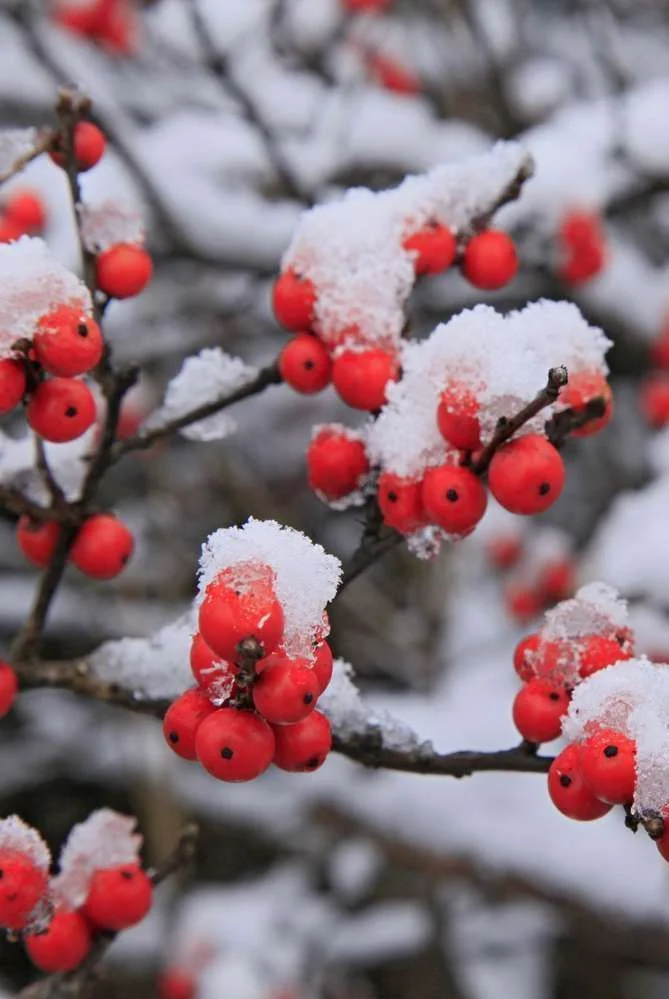
5. Winterberry
- Scientific Name: Ilex verticillata
- Size: Winterberry can be of different heights, ranging from 3 to 15 feet, depending on the type.
- Details: Winterberry, a type of holly that loses its leaves, is known for its bright red berries that stay on the branches during the winter. Ensure the soil drains well and is a bit acidic for the best growth. Winterberry has male and female plants, and you need both for berries, although some kinds can make berries on their own. The berries add a festive touch for flower garden in winter and birds like them.
- Best Time to Plant: It’s best to plant Winterberry in late fall or early spring, just before the start of the growing season.
6. Lily of the Valley Shrub
- Scientific Name: Pieris japonica
- Size: Depending on the kind, the Lily of the Valley Shrub can grow to be 3 to 10 feet tall.
- Details: The Lily of the Valley Shrub is known for its hanging groups of bell-shaped flowers and evergreen leaves. Plant it in soil that drains well and is a bit acidic, and give it some shade. This shrub blooms in early spring, bringing a lovely and sweet-smelling touch for flower garden in winter
- Best Time to Plant: It’s good to plant Lily of the Valley Shrub in early spring or early fall.
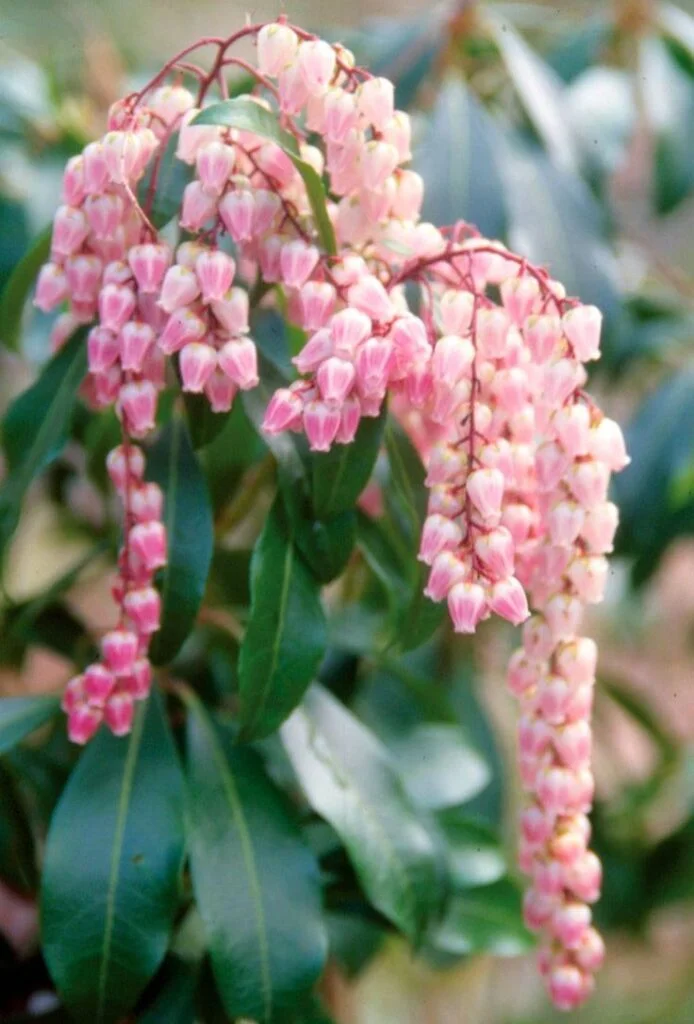
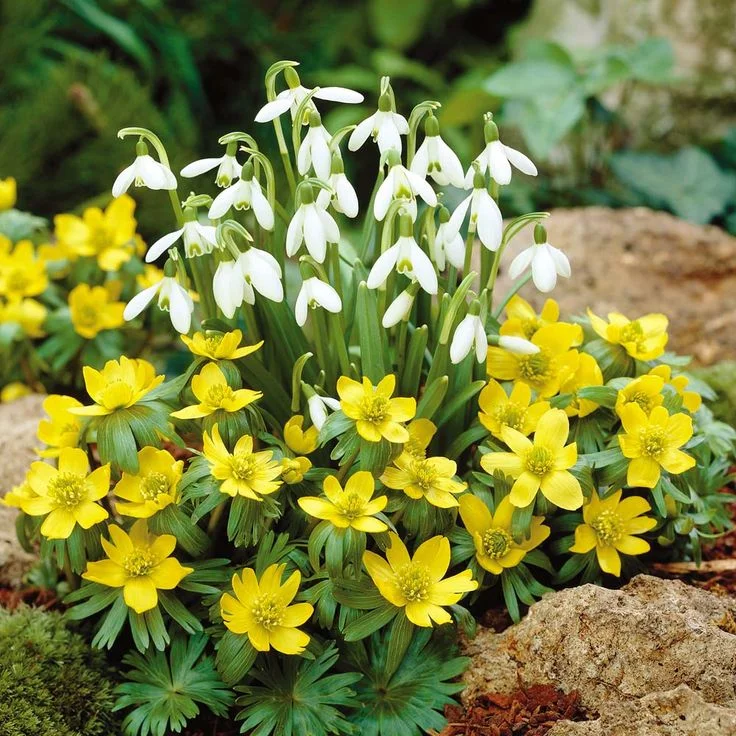
7. Winter Aconite
- Scientific Name: Eranthis hyemalis
- Size: Winter Aconite usually grows to be around 3-6 inches tall.
- Details: Winter Aconite, scientifically known as Eranthis hyemalis, is a small and pretty yellow flower that blooms in late winter or early spring. Plant it in soil that drains well and in a place with some shade. These flowers can handle cold weather well, and they’re among the first to bloom in late winter, bringing happiness for flower garden in winter.
- Best Time to Plant: It’s best to plant Winter Aconite in early fall or late summer.
8. Witch Hazel
- Scientific Name: Hamamelis spp.
- Size: Depending on the kind, Witch Hazel can grow to be 10-20 feet tall.
- Details: Witch Hazel is a shrub or small tree that loses its leaves, and it has unique, spidery flowers for flower garden in winter. Put it in soil that drains well and give it full or partial sunlight. People like Witch Hazel for its special flowers and its ability to handle cold weather, making your garden interesting during colder times.
- Best Time to Plant: It’s a good idea to put Witch Hazel in the ground either in late fall or early spring, right before the new growth begins.
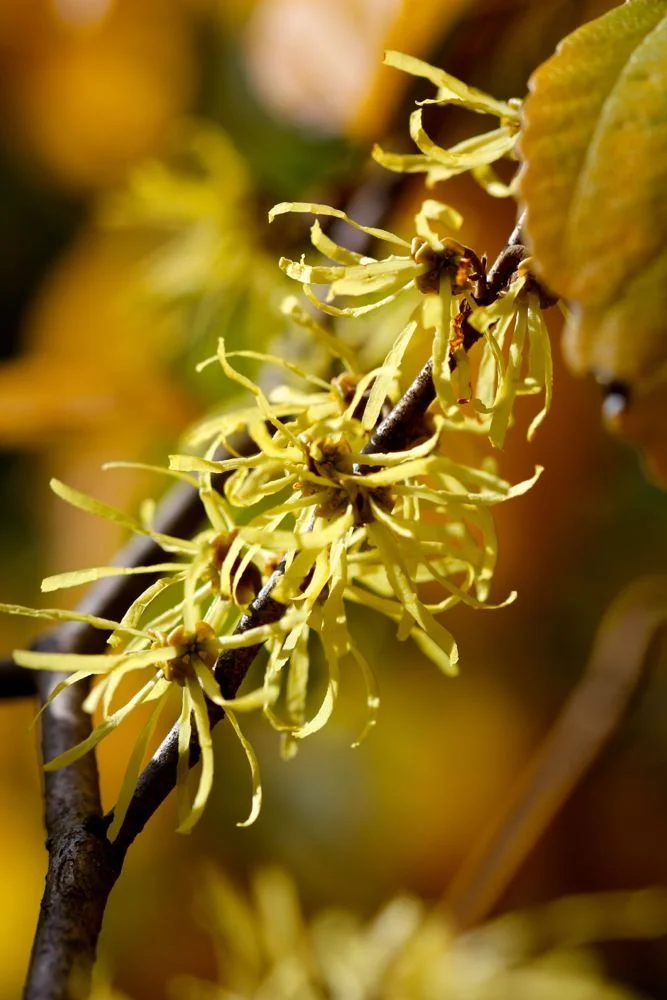
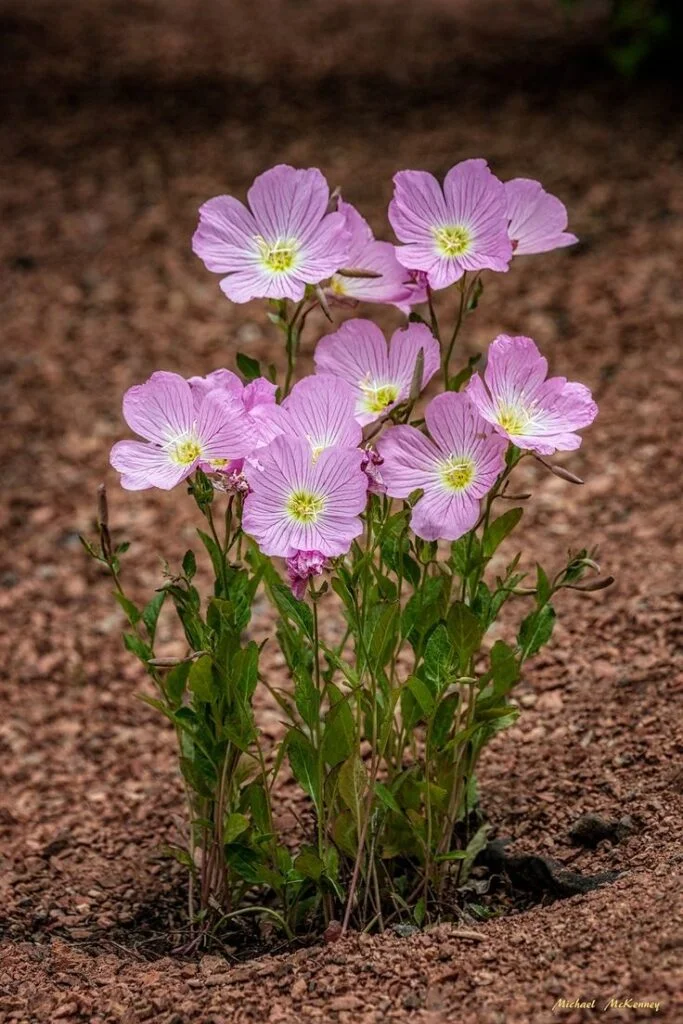
9. Primrose
- Scientific Name: Primula spp.
- Size: The height of Primrose can be different, going from 6 to 12 inches, depending on the kind of Primrose.
- Details: Primroses are charming flowers that come in various colors. Plant them in well-drained, moist soil and provide them with partial shade. These early bloomers add a burst of color for flower garden in winter. Primroses are often used for borders, containers, or as ground cover.
- Best Time to Plant: Primrose is best planted in early spring or late summer.
10. Camellia
- Scientific Name: Camellia spp.
- Size: They can be different sizes, with some kinds growing up to 20 feet tall.
- Details: Camellias, represented by the scientific name Camellia, are evergreen shrubs or trees renowned for their beautiful, waxy flowers. Plant them in soil that drains well and is a bit acidic, and they like some shade. Camellias usually bloom in late winter or early spring, showing off various colors like white, pink, and red. They’re a timeless choice for flower garden in winter and landscapes look fancy.
- Best Time to Plant: Camellias are best planted in late fall or early spring.
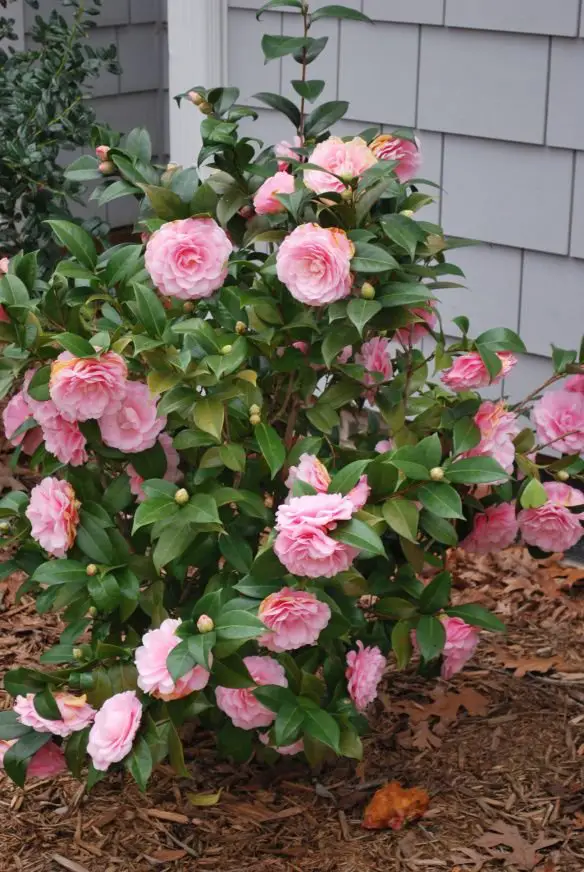
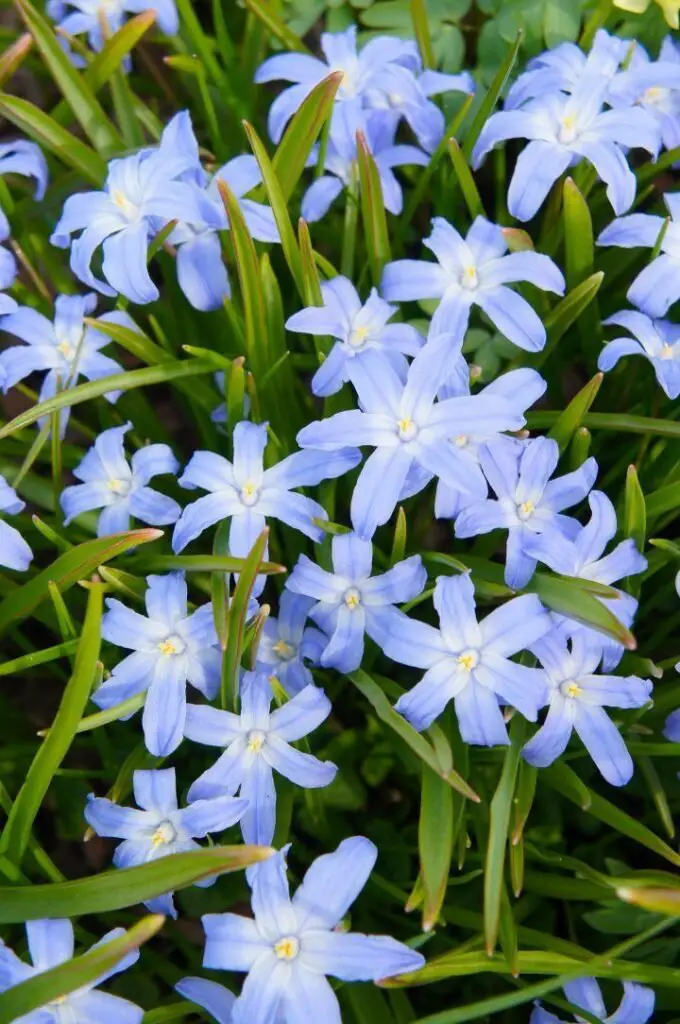
11. Glory of the Snow for Flower Garden in Winter
- Scientific Name: Chionodoxa spp.
- Size: These flowers usually grow to be about 4-6 inches tall.
- Details: Glory of the Snow, scientifically known as Chionodoxa, is a delightful spring bulb with star-shaped flowers that look like a small, colorful carpet when they bloom in full. Plant them in soil that drains well in the fall, and they will give you beautiful blossoms in early spring in colors like blue, pink, and white. These flowers are easy to take care of and spread naturally, meaning they come back every year, making your flower garden in winter more beautiful.
- Best Time to Plant: Plant Glory of the Snow in the fall, before the first frost.
12. Mahonia
- Scientific Name: Mahonia spp.
- Size: Mahonia comes in various sizes, varying from 3 to 15 feet in height, depending on the specific type.
- Details: Mahonia is a shrub that keeps its leaves and is known for its feathery leaves and groups of sweet-smelling, yellow flowers. Put it in soil that drains well and give it some shade, either partial or full, for it to grow well. Mahonia usually has flowers in late fall to early winter, adding color to your flower garden in winter. Some types also make pretty berries, making your garden even more interesting.
- Best Time to Plant: Plant Mahonia in the fall or early spring for the best results.
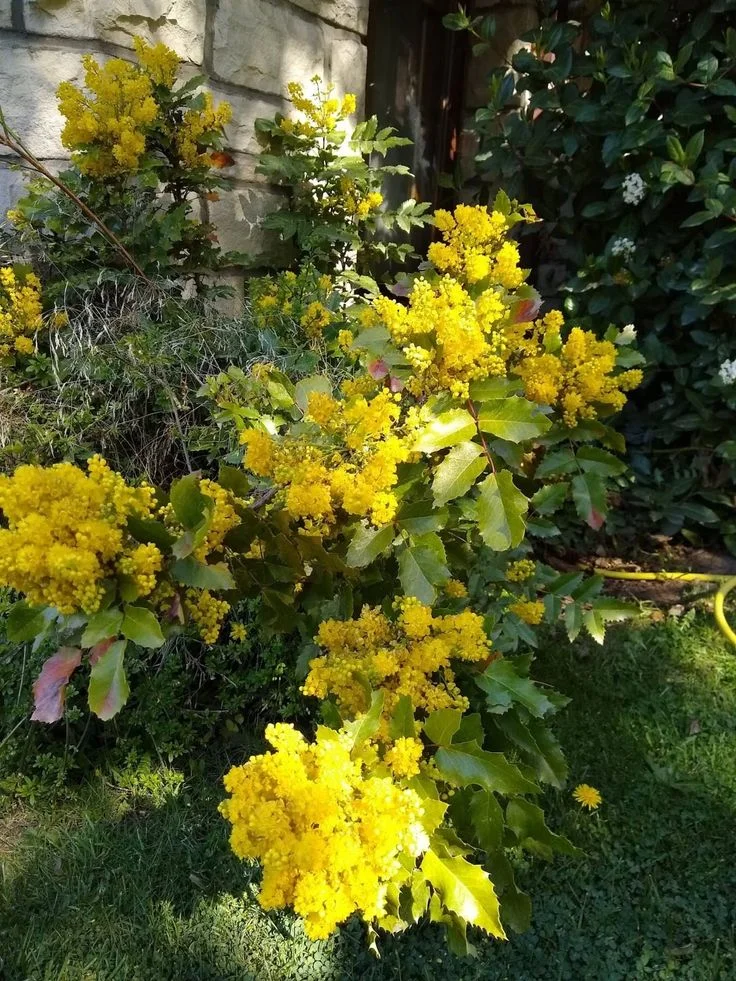
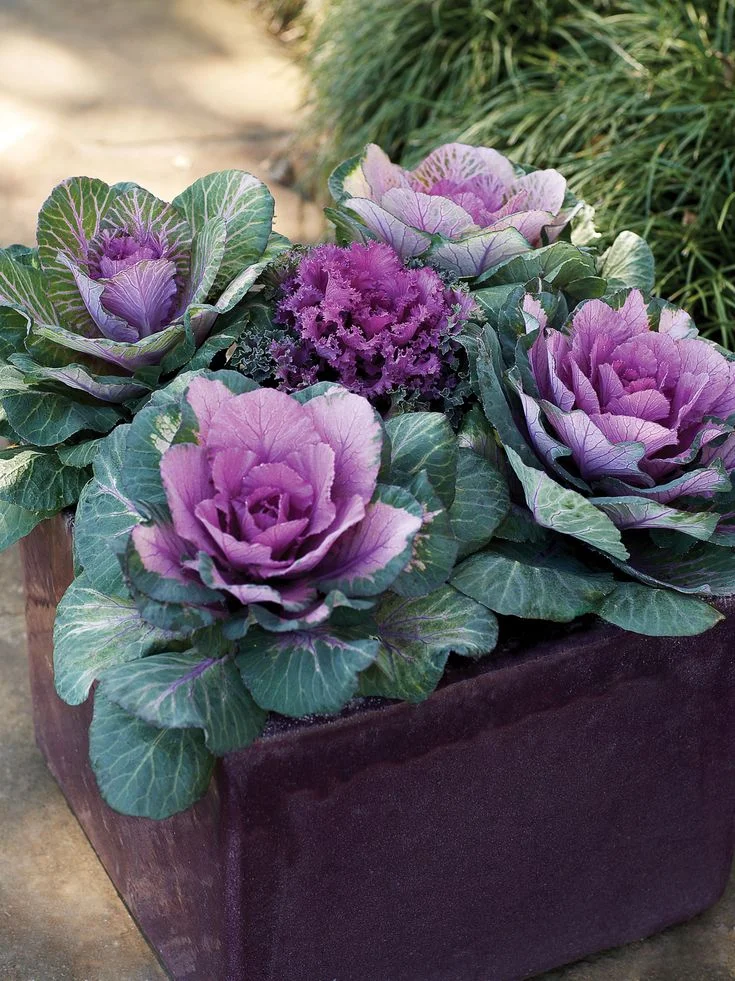
13. Ornamental Kale
- Scientific Name: Brassica oleracea
- Size: These plants usually grow to be about 12-18 inches tall.
- Details: Ornamental Kale is a special type of kale that looks pretty in gardens. It has colorful leaves and makes the gardens look nice. Plant it in soil that drains well and gives it lots of sunlight for the best colors. Ornamental Kale likes the cold, and its colors get even brighter when it’s chilly, making it a lovely addition to flower garden in winter.
- Best Time to Plant: Plant Ornamental Kale in late summer or early fall.
14. Winter Jasmine
- Scientific Name: Jasminum nudiflorum
- Size: This plant grows as a trailing shrub and can reach a height of 4-10 feet.
- Details: Winter Jasmine is a plant that’s easy to take care of. It displays vibrant yellow flowers that blossom in late winter or early spring, appearing before the leaves emerge. Plant it in soil that drains well and give it full or partial sunlight. Winter Jasmine is great for hanging over walls or growing on trellises, bringing warmth to your flower garden in winter.
- Best Time to Plant: The best time to plant Winter Jasmine is in the fall or early spring.
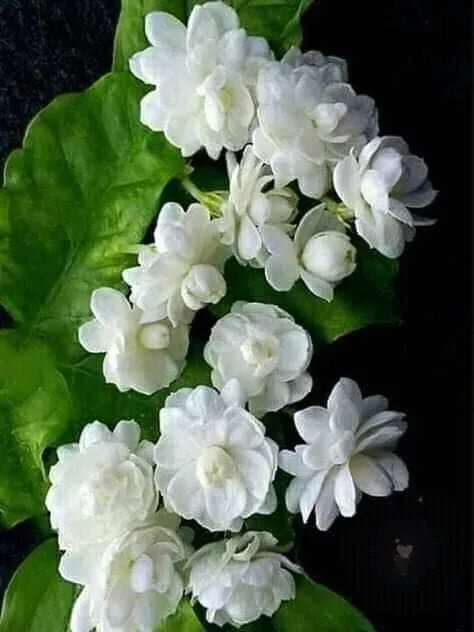
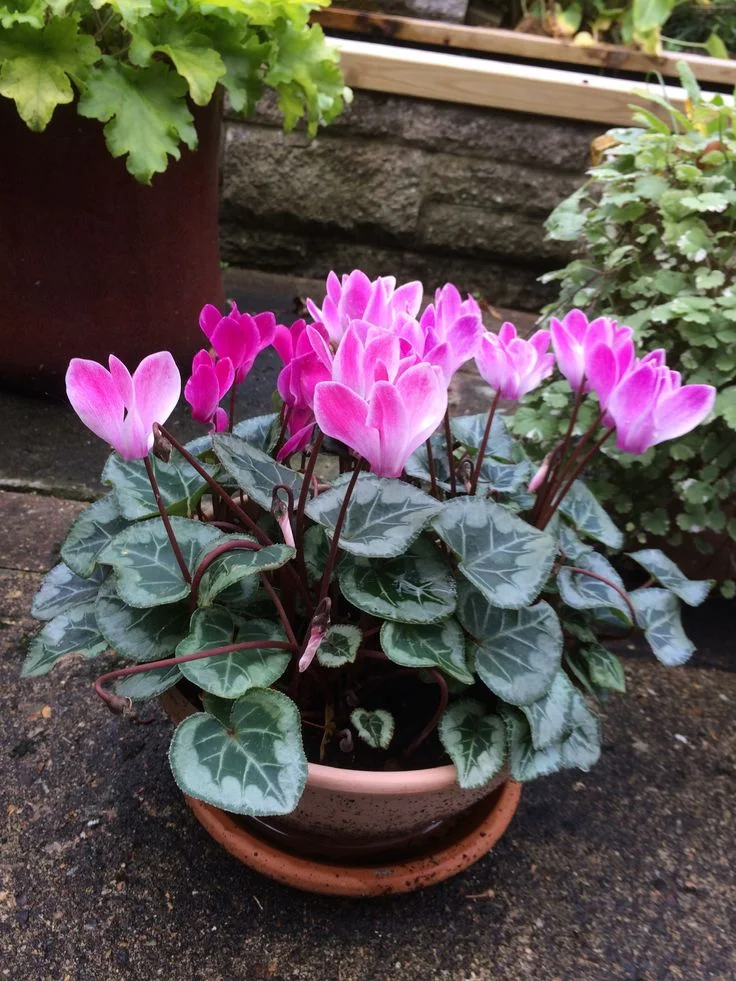
15. Cyclamen
- Scientific Name: Cyclamen spp.
- Size: These plants usually grow to be about 4-12 inches tall.
- Details: Cyclamen is a lovely plant with special, upward-facing petals and pretty, marbled leaves. Plant them in soil that drains well and give them some shade. Cyclamen usually has flowers in late winter or early spring, making your for flower garden in winter. People often grow them in pots, and they also look nice as indoor plants.
- Best Time to Plant: It’s good to plant Cyclamen in late summer or early fall.
16. Crocus
- Scientific Name: Crocus spp.
- Size: These small flowers typically grow to be around 3-6 inches in height.
- Details: Crocus is a delightful bulbous plant that blooms in early spring. Plant them in well-drained soil and provide them with full sun to partial shade. Crocuses are among the first flowers to appear, often pushing through the snow, signaling the arrival of spring. They come in various colors, including shades of purple, yellow, and white, and add a cheerful touch to for flower garden in winter.
- Best Time to Plant: Crocus is best planted in late summer or early fall.
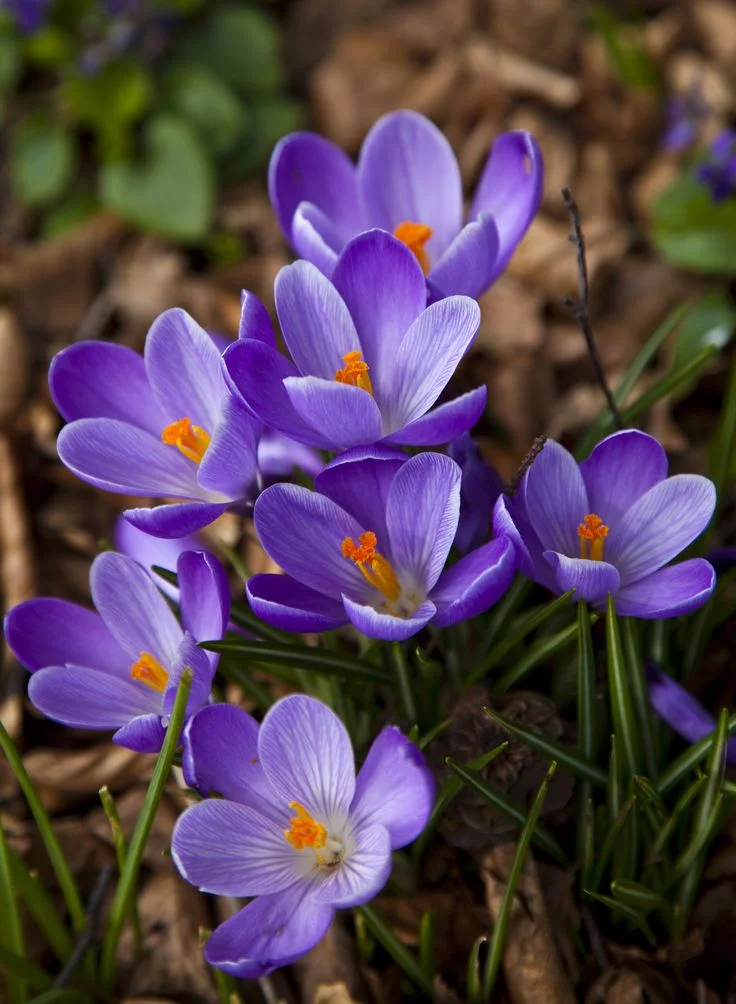
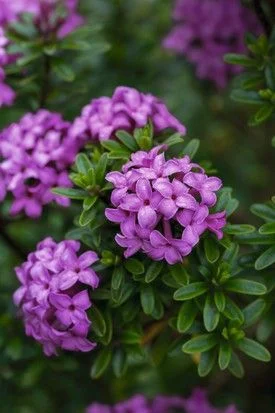
17. Daphne
- Scientific Name: Daphne spp
- Size: These shrubs can differ in size, typically spanning from 3 to 6 feet in height.
- Details: Daphne is an aromatic and evergreen shrub appreciated for its fragrant flowers. Plant them in well-draining soil and provide partial shade. Daphne usually blooms in late winter or early spring, emitting a pleasant fragrance. While the flowers are beautiful, it’s important to note that Daphne can be a bit finicky, requiring specific care to thrive. The reward, however, is the sweet scent and charm it adds to your for flower garden in winter.
- Best Time to Plant: Daphne is ideally planted in the fall or early spring.
18. Reticulated Iris
- Scientific Name: Iris reticulata
- Size: These small irises usually grow to be about 4-6 inches tall.
- Details: Reticulated Iris, also called Iris reticulata, is a pretty iris that grows from a bulb and blooms in late winter to early spring. Plant it in soil that drains well and give it full sun or a bit of shade. These early flowers come in different colors, like blue, purple, and yellow, making your flower garden in winter. They work well in rock gardens, borders, and pots.
- Best Time to Plant: The best time to plant Reticulated Iris is in late summer or early fall.
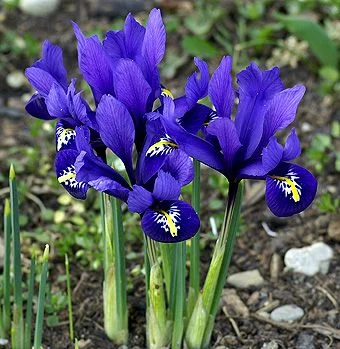
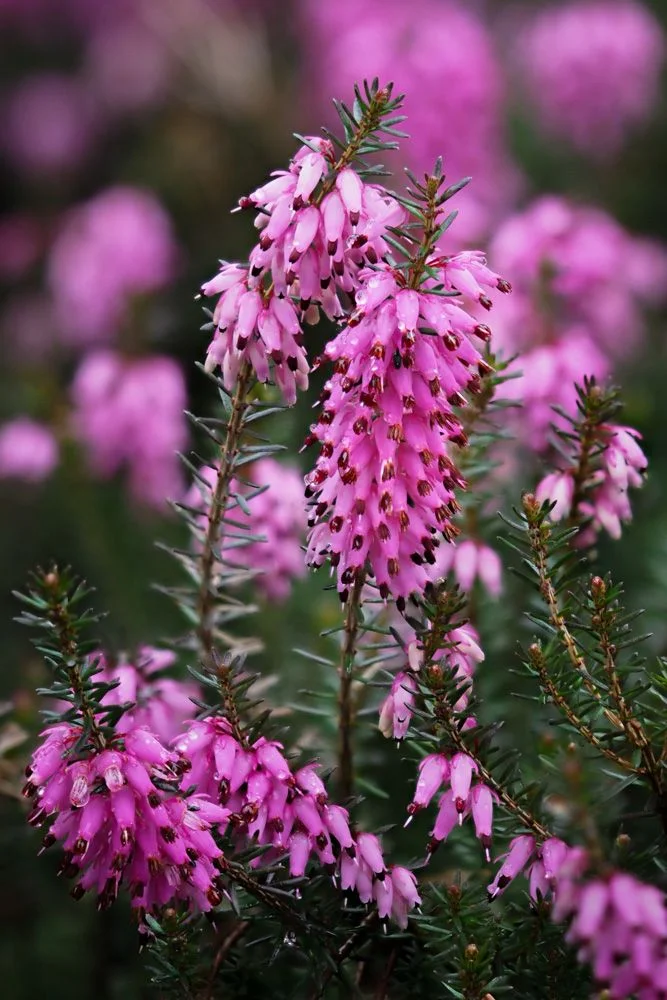
19. Winter Heath (Erica Carnea)
- Scientific Name: Erica carnea
- Size: These small shrubs usually grow to be about 6-12 inches tall.
- Details: Winter Heath is a strong evergreen shrub loved for blooming in the winter. Plant it in soil that drains well and gets some sunlight, either full or a bit of shade. Winter Heath has tiny, bell-shaped flowers in different colors like pink, white, or purple, making your flower garden in winter. It’s a good choice for covering the ground, rock gardens, or planting along borders.
- Best Time to Plant: The ideal time to plant Winter Heath is in the fall or early spring.
20. Winter Honeysuckle
- Scientific Name: Lonicera fragrantissima
- Size: These shrubs usually grow to be about 6-10 feet tall.
- Details: Winter Honeysuckle is a shrub that loses its leaves and is loved for having sweet-smelling white flowers that bloom in late winter or early spring. Plant it in soil that drains well and gets some sunlight, either full or a bit of shade. Winter Honeysuckle smells nice, attracting pollinators to your flower garden in winter. It’s a good plant for borders, hedges, or just on its own.
- Best Time to Plant: It’s good to plant Winter Honeysuckle in late fall or early spring.
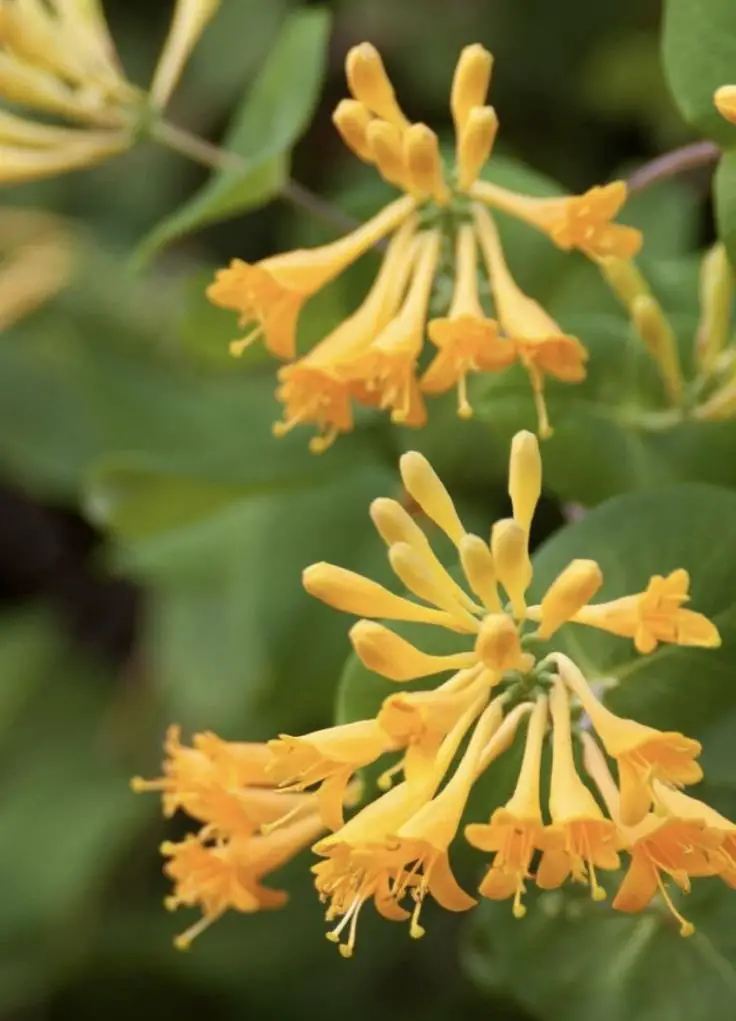
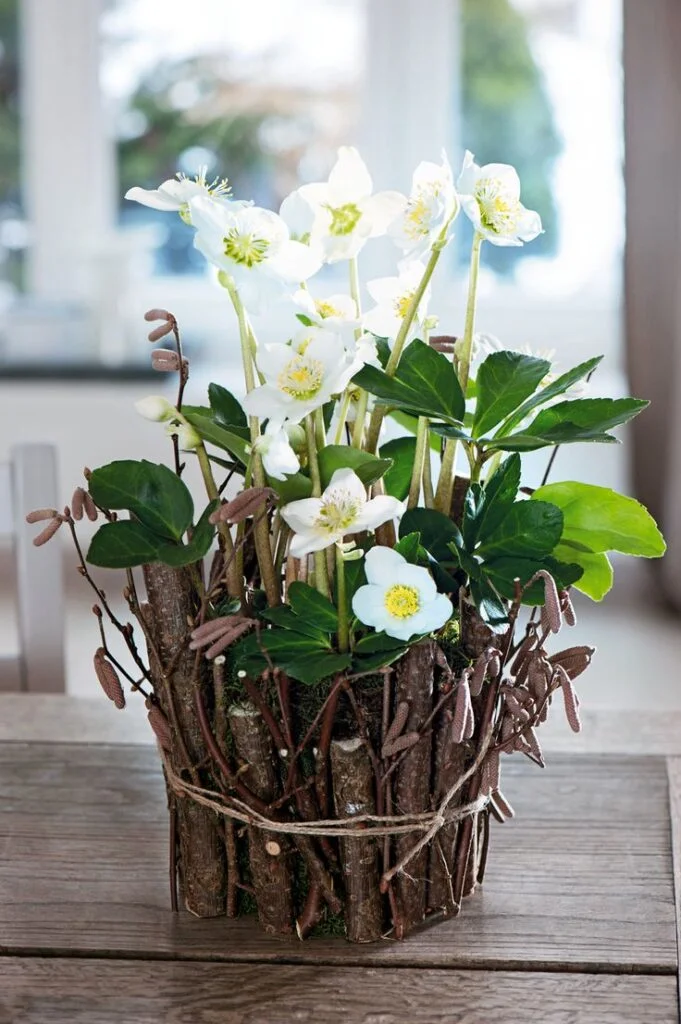
21. Christmas Rose
- Scientific Name: Helleborus niger
- Size: These plants that come back every year usually grow to be about 12-18 inches tall.
- Details: Christmas Rose is a nice plant that stays in your garden year after year, and people like it for its special winter flowers. Plant it in soil that drains well and give it some shade, either full or a bit of shade. Despite its name, the Christmas Rose usually has flowers from late winter to early spring, and they look like roses in colors like white, pink, or purple. It’s good for for flower garden in winter and can go in borders, woodland gardens, or pots.
- Best Time to Plant: It’s best to plant Christmas roses in late fall or early spring.
22. Winter Clematis
- Scientific Name: Clematis spp.
- Size: These climbing plants come in different sizes, with some growing as tall as 10-20 feet.
- Details: Winter Clematis is a plant that climbs and has pretty flowers. Plant it in soil that drains well and make sure it has something to climb on. Even though it’s called Winter Clematis, it usually has flowers from late winter to early spring, adding color to your garden. Clematis comes in different colors, like purple, blue, pink, and white. You can put them on trellises, and fences, or make them a focus in your flower garden in winter.
- Best Time to Plant: It’s good to plant Winter Clematis in late fall or early spring.
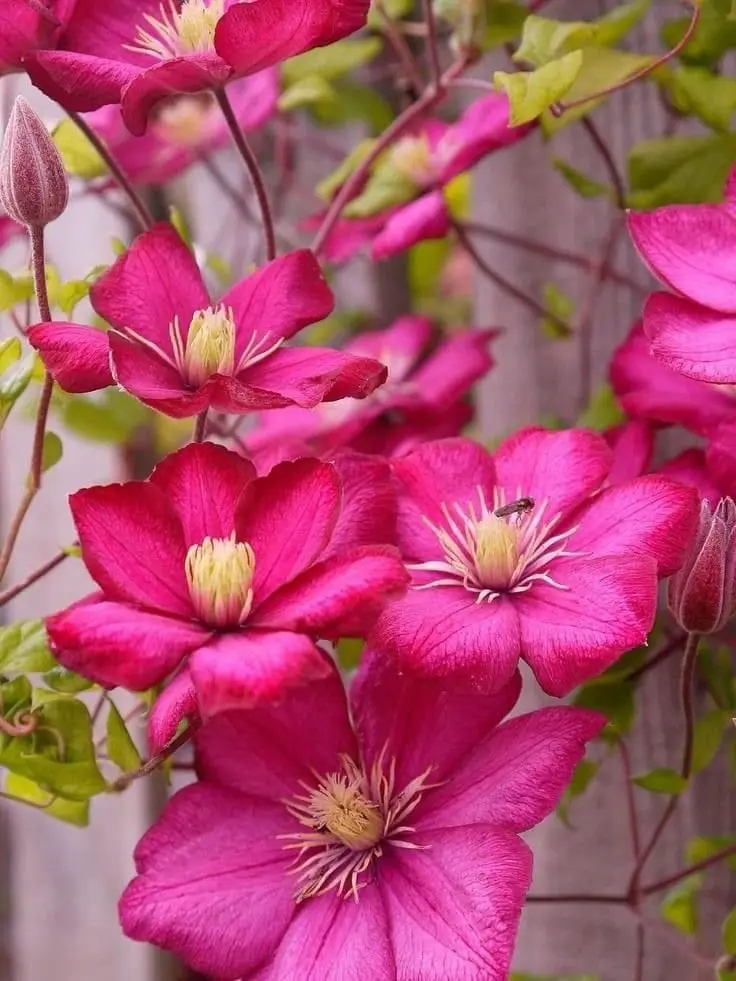
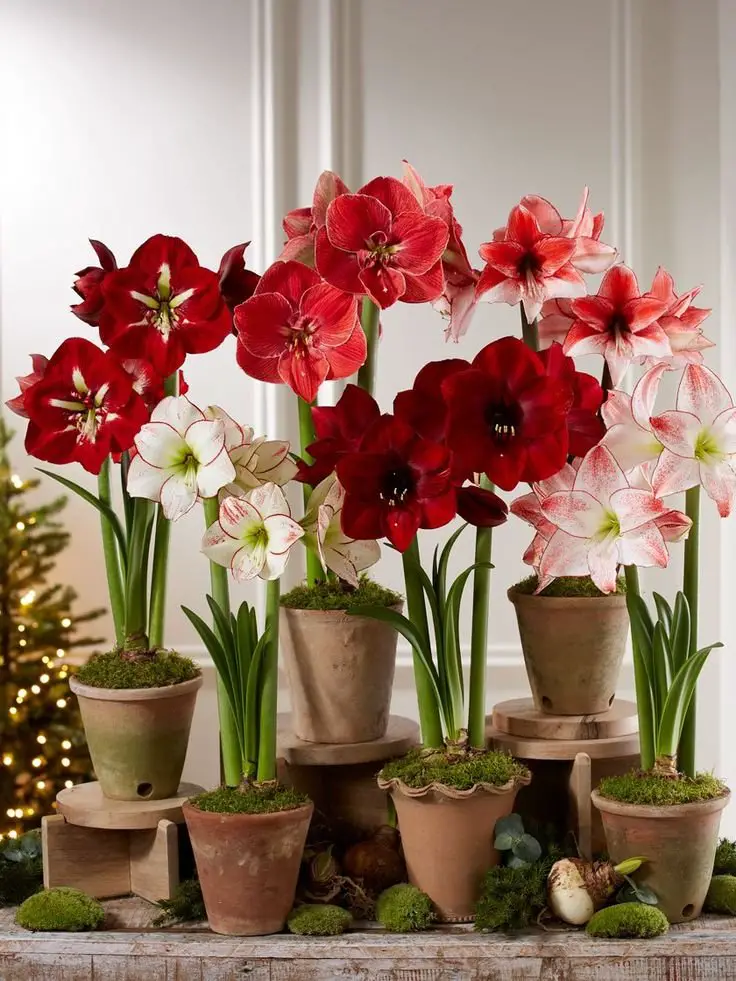
23. Amaryllis
- Scientific Name: Hippeastrum spp.
- Size: Amaryllis plants usually grow to be about 18-24 inches tall.
- Details: Amaryllis is a bulbous plant that’s famous for its big, colorful flowers. Put the bulbs in soil that drains well, making sure about one-third of the bulb is above the ground. Amaryllis bulbs can make lovely flowers in different colors like red, pink, white, and stripes. People often grow them inside in pots, making them a popular choice to make homes look fancy for flower garden in winter.
- Best Time to Plant: The best time to plant Amaryllis bulbs is in late fall or early winter to see beautiful winter flowers.
24. Algerian Iris
- Scientific Name: Iris unguicularis
- Size: These plants that stay green all year usually grow to be about 12-18 inches tall.
- Details: Algerian Iris is a plant that stays green all year, and people like it because it has flowers in the winter. Plant them in soil that drains well and give them sunlight, either full or a bit of shade. Algerian Iris often has flowers in the winter that are violet-blue with yellow markings. This strong plant adds color to your flower garden in winter and works well in rock gardens, borders, or on the ground.
- Best Time to Plant: It’s good to plant Algerian Iris in the fall.
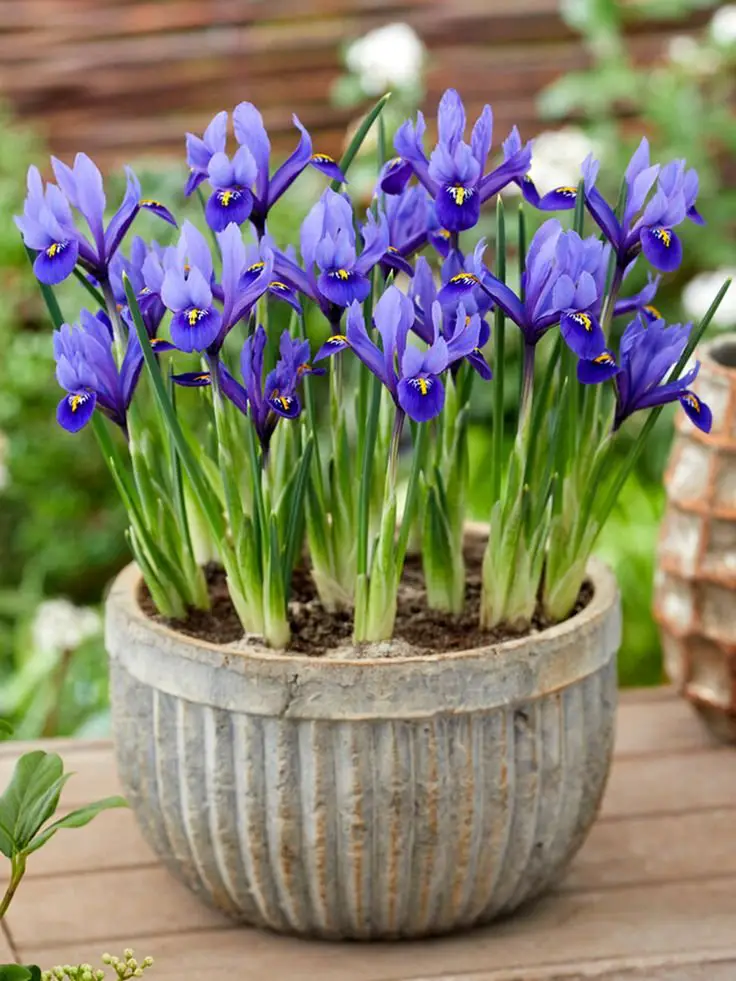
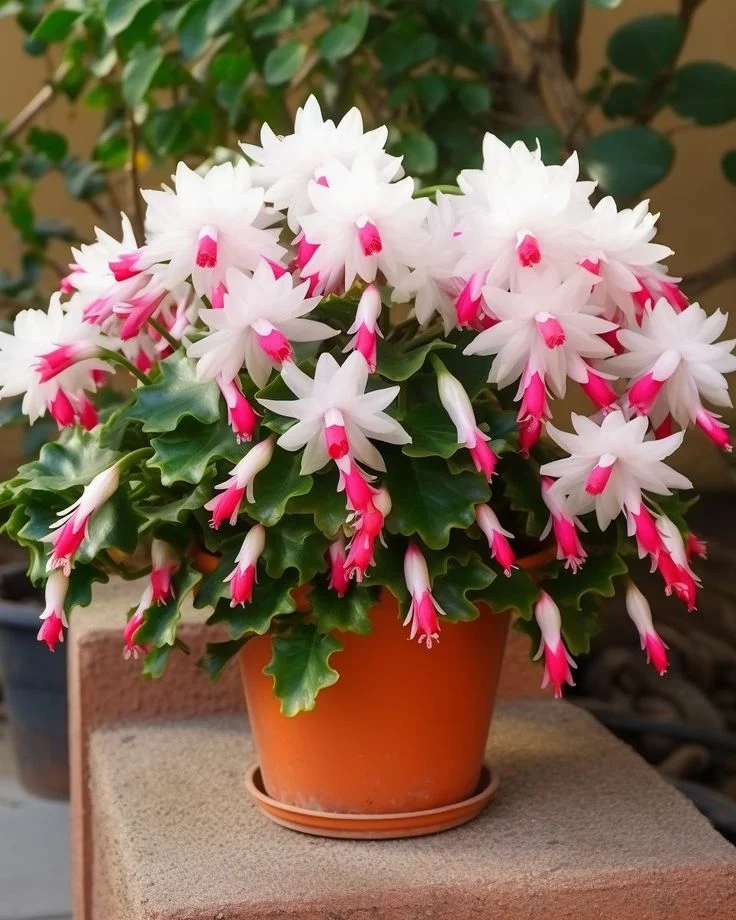
25. Christmas Cactus
- Scientific Name: Schlumbergera spp.
- Size: These plants that store water usually grow to be about 12-18 inches tall.
- Details: Christmas Cactus is a special plant that people like for its colorful flowers. Plant them in soil that drains well and let them get some sunlight but not directly. Even though it’s called Christmas Cactus, it usually has flowers from late fall to early winter in colors like pink, red, white, or orange. Many people grow it inside in pots, making it a nice addition to homes for flower garden in winter.
- Best Time to Plant: The best time to plant Christmas Cactus is in late spring to early summer.
26. Dutchman’s Breeches
- Scientific Name: Dicentra cucullaria
- Size: These plants usually grow every year and can be about 6-12 inches tall.
- Details: Dutchman’s Breeches is a plant that stays around for a long time, and people like it for its special, breech-like flowers. Plant them in soil that drains well and give them some shade, either full or a bit. Dutchman’s Breeches usually have flowers in early spring that are white or pink and look like upside-down breeches. It’s a nice plant for flower garden in winter with trees, rock gardens, or areas where plants grow naturally.
- Best Time to Plant: It’s good to plant Dutchman’s Breeches in early spring.
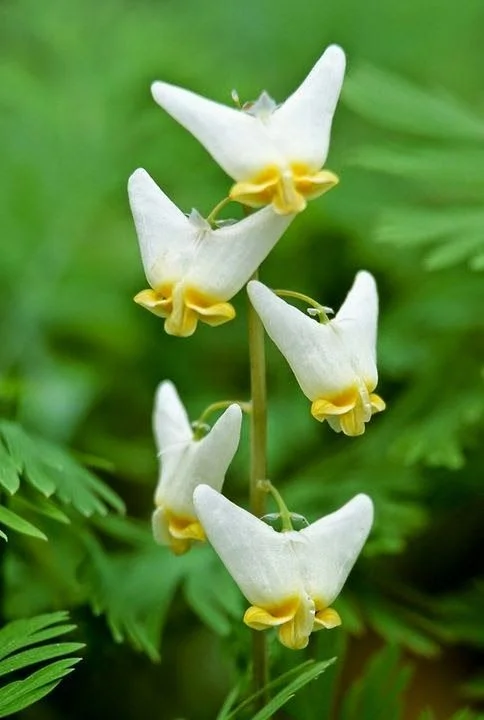
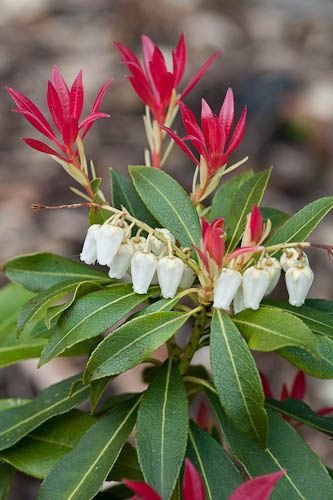
27. Pieris
- Scientific Name: Pieris spp.
- Size: These evergreen shrubs vary in size, with some reaching heights of 6-12 feet.
- Details: Pieris is an evergreen shrub admired for its graceful foliage and cascading clusters of flowers. Plant them in well-drained, acidic soil and provide partial to full shade. Pieris usually has flowers in early spring. These flowers hang in groups and look like bells, coming in colors like white, pink, or red. Pieris is a plant that can be used in many ways, like for the edges of gardens, in gardens with trees, or as a beautiful part of your flower garden in winter.
- Best Time to Plant: Pieris is best planted in the fall or early spring.
28. Ipheion
- Scientific Name: Ipheion spp.
- Size: These plants that come back every year usually grow to be about 4-6 inches tall.
- Details: Ipheion is a plant that stays around for a long time, and people like it for its small and pretty flowers. Plant them in soil that drains well and give them sunlight, either full or a bit of shade. It comes in colors like blue, white, or pink. It’s a nice plant for flower garden in winter with rocks, borders, or covering the ground, adding a delicate touch to your outdoor space.
- Best Time to Plant: The best time to plant Ipheion is in the fall or early spring.
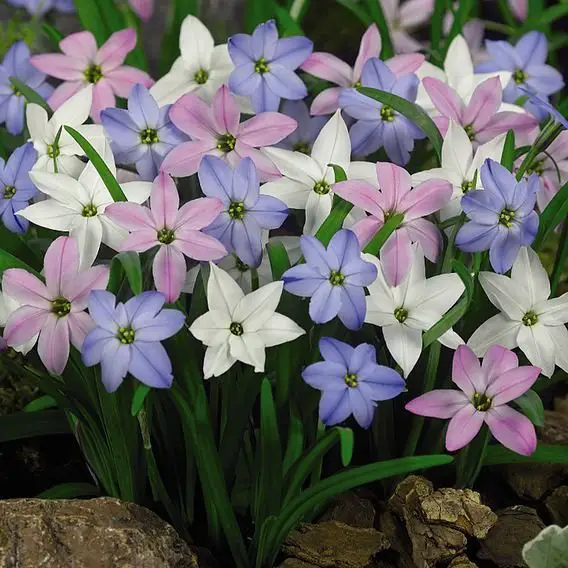
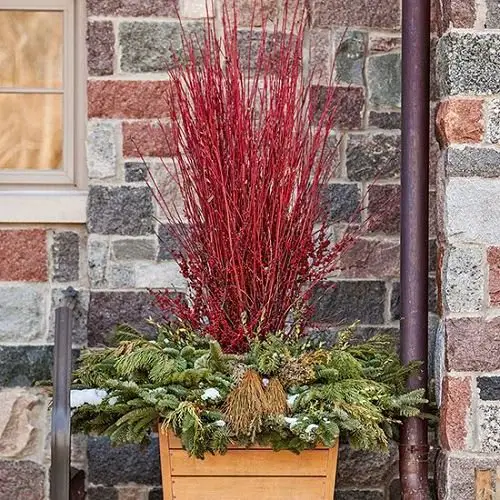
29. Red Twig Dogwood
- Scientific Name: Cornus sericea
- Size: These deciduous shrubs vary in size, generally reaching heights of 6-9 feet.
- Details: It is a deciduous shrub cherished for its vibrant red stems in winter. Plant them in soil that drains well and give them sunlight, either full or a bit of shade. While it blooms with small white flowers in late spring, its main attraction lies in the striking red stems that add color to your flower garden in winter.
- Best Time to Plant: Red Twig Dogwood is best planted in the fall or early spring.
30. Mediterranean White Heather
- Scientific Name: Erica multiflora
- Size: These low-growing shrubs that stay green all year usually grow to be about 12-18 inches tall.
- Details: Mediterranean White Heather is a plant that stays green all year, and people like it for its small white flowers. Plant them in soil that drains well and give them sunlight, either full or a bit of shade. This heather usually has flowers in late winter to early spring, covering the ground with white flowers. It’s a nice plant for gardens with rocks, borders, or covering the ground, adding a touch of fancy for flower garden in winter.
- Best Time to Plant: It’s good to plant Mediterranean White Heather in the fall.
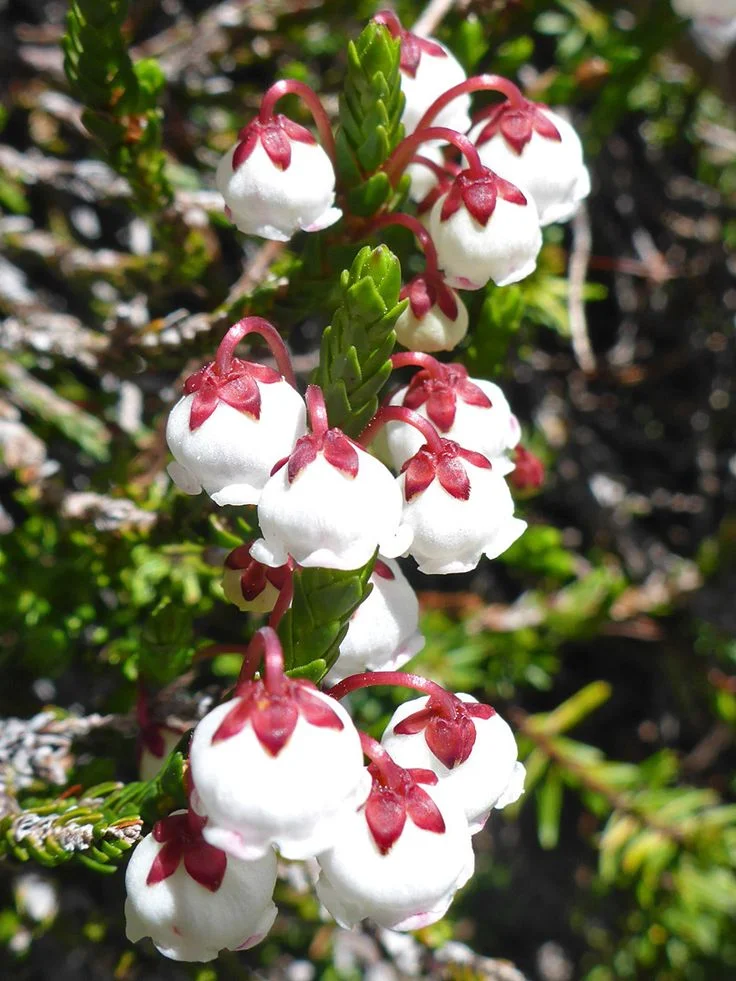
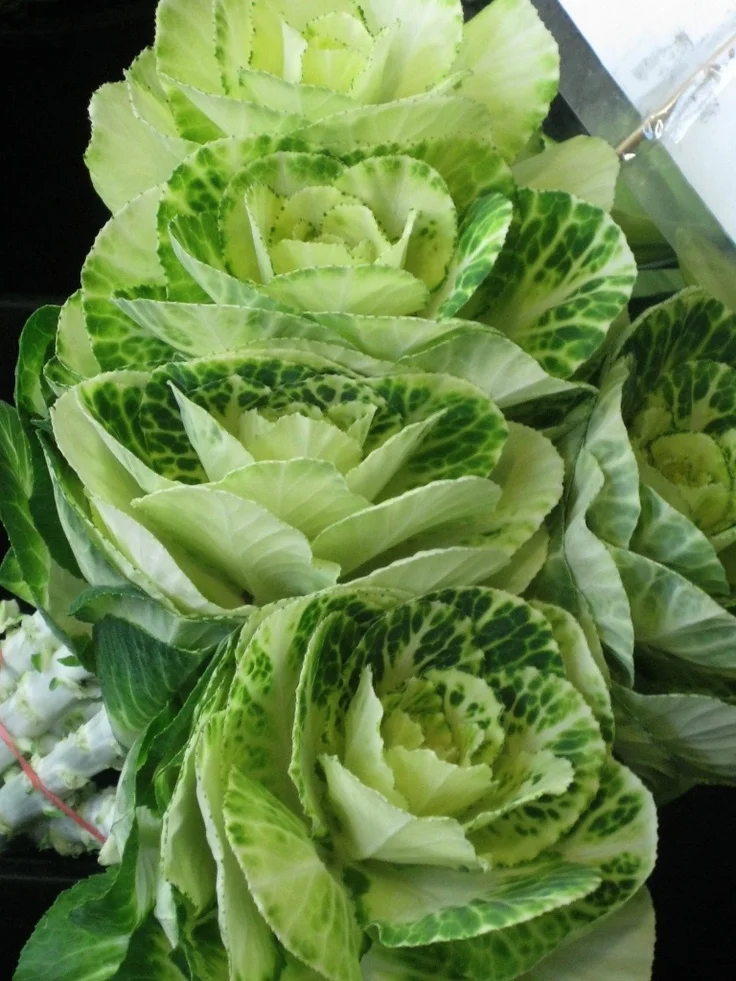
31. Ornamental Cabbage
- Scientific Name: Brassica oleracea
- Size: These plants that look nice but don’t have traditional flowers usually grow to be about 12-18 inches tall.
- Details: Ornamental Cabbage and Kale are plants that people grow because their leaves are colorful, not for their flowers. Plant them in soil that drains well and give them sunlight, either full or a bit of shade. Even though they don’t have regular flowers, these plants have leaves in colors like purple, pink, white, or green, making fall and flower garden in winter more colorful. People often use them for decoration, in pots, or as a border in flower beds.
- Best Time to Plant: It’s good to plant Ornamental Cabbage and Kale in the fall.
32. Siberian Scilla
- Scientific Name: Scilla siberica
- Size: These plants that come back every year from bulbs usually grow to be about 4-6 inches tall.
- Details: Siberian Scilla is a plant that comes back every year from bulbs, and people like it for its small blue flowers. Plant them in soil that drains well and give them sunlight, either full or a bit of shade. Siberian Scilla usually has flowers in early spring that make a blue carpet. It’s a nice plant for flower garden in winter with rocks, borders, or covering the ground, making your outdoor space more beautiful.
- Best Time to Plant: It’s good to plant Siberian Scilla in the fall.
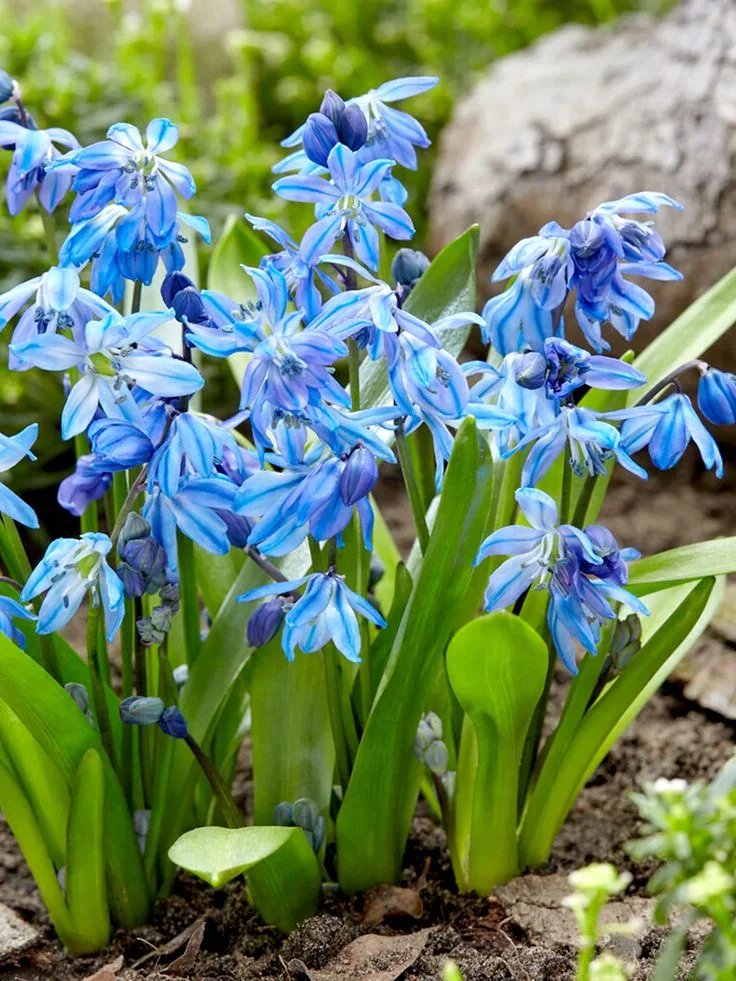
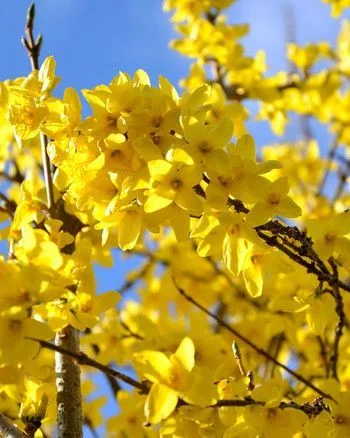
33. Forsythia
- Scientific Name: Forsythia spp.
- Size: These deciduous shrubs can vary in size, reaching heights of 6-10 feet.
- Details: Forsythia is a deciduous shrub celebrated for its vibrant yellow flowers that bloom early in spring. Plant them in soil that drains well and give them sunlight, either full or a bit of shade. Forsythia is known for its arching branches covered in bright yellow blossoms, creating a stunning display. It’s often used as a hedge, in borders, or as a specimen plant, bringing an early burst of color to your flower garden in winter.
- Best Time to Plant: Forsythia is best planted in the fall or early spring.
34. Bachelor’s Buttons
- Scientific Name: Centaurea cyanus
- Size: These flowers that last for a year usually grow to be about 1-3 feet tall.
- Details: Bachelor’s Buttons are flowers that people plant every year, and they like them because they have pretty blue blooms. Plant them in soil that drains well and let them get lots of sunlight. These flowers usually have blooms from late spring to early summer, showing off bright blue petals. They are easy to take care of and are nice to have in gardens, on the edges of flower garden in winter, or in flower arrangements.
- Best Time to Plant: It’s good to plant Bachelor’s Buttons in the fall or early spring.
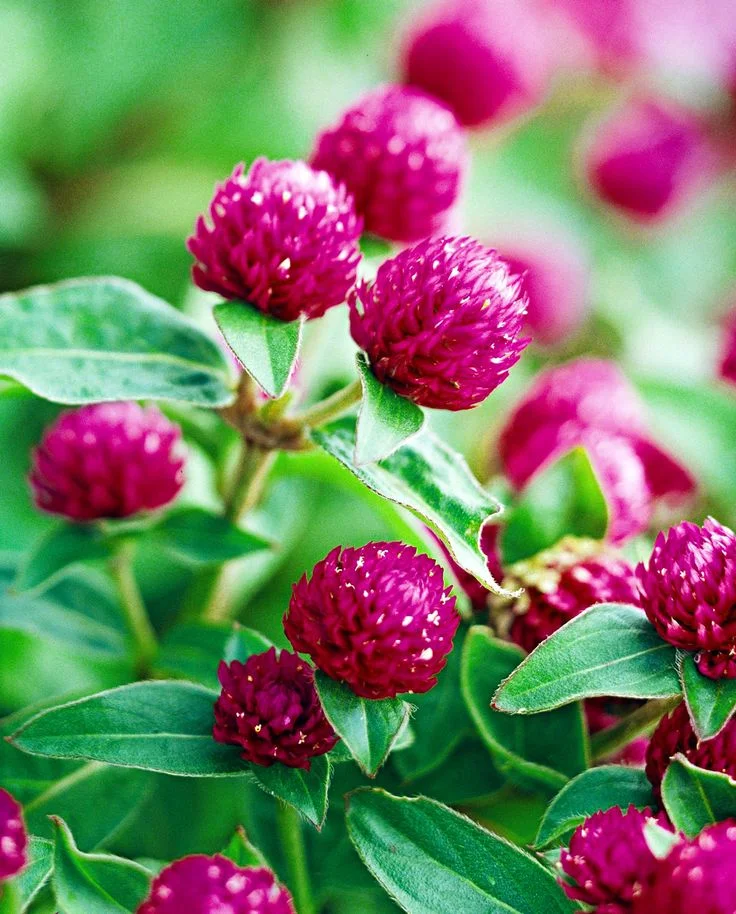
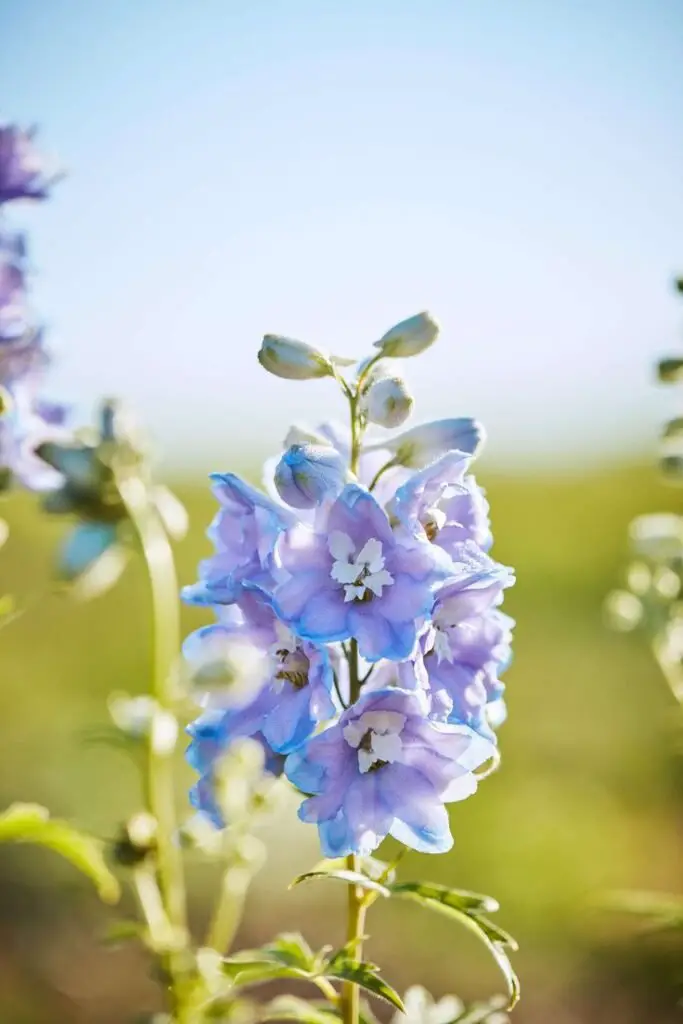
35. Delphinium
- Scientific Name: Delphinium spp.
- Size: These plants that come back every year can be different sizes, but they usually grow to be about 3-6 feet tall.
- Details: Delphinium is a plant that stays around for a long time, and people like it because it has tall spikes with colorful flowers. Plant them in soil that drains well and gives them lots of sunlight. Delphiniums usually have flowers from late spring to early summer, and they come in colors like blue, purple, pink, or white. People often use them in gardens, on the edges of flower garden in winter, or as the main focus in the yard, making it look taller and more elegant.
- Best Time to Plant: It’s good to plant Delphinium in the fall or early spring.
36. Poppies
- Scientific Name: Papaver spp.
- Size: These annual or perennial flowers vary in size, typically growing to be about 1-4 feet tall.
- Details: Poppies are flowers known for their distinctive, papery petals and vibrant colors for flower garden in winter. Plant them in soil that drains well and let them get lots of sunlight. Poppies usually have flowers from late spring to early summer, and they come in colors like red, orange, pink, or white, making your garden more colorful.
- Best Time to Plant: Poppies are best planted in the fall or early spring.
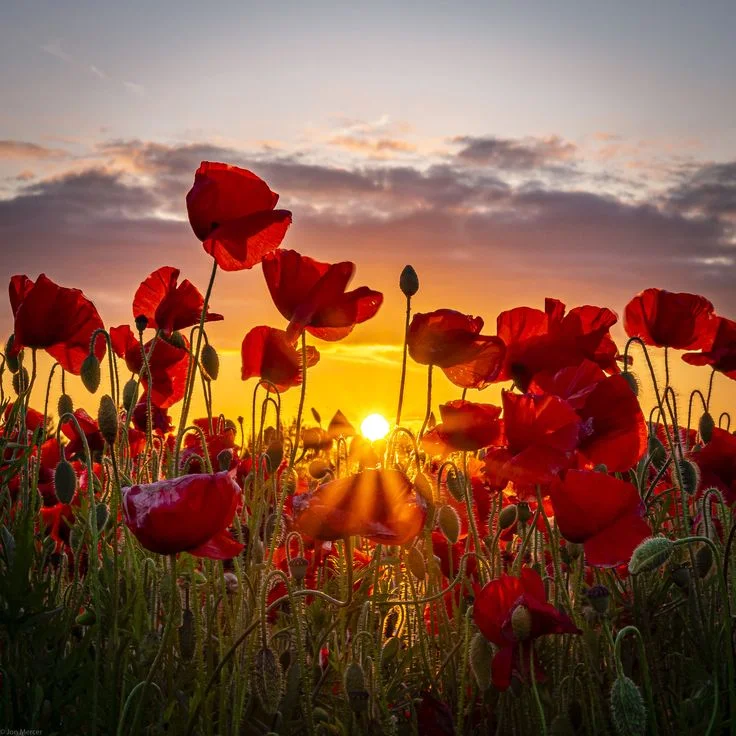
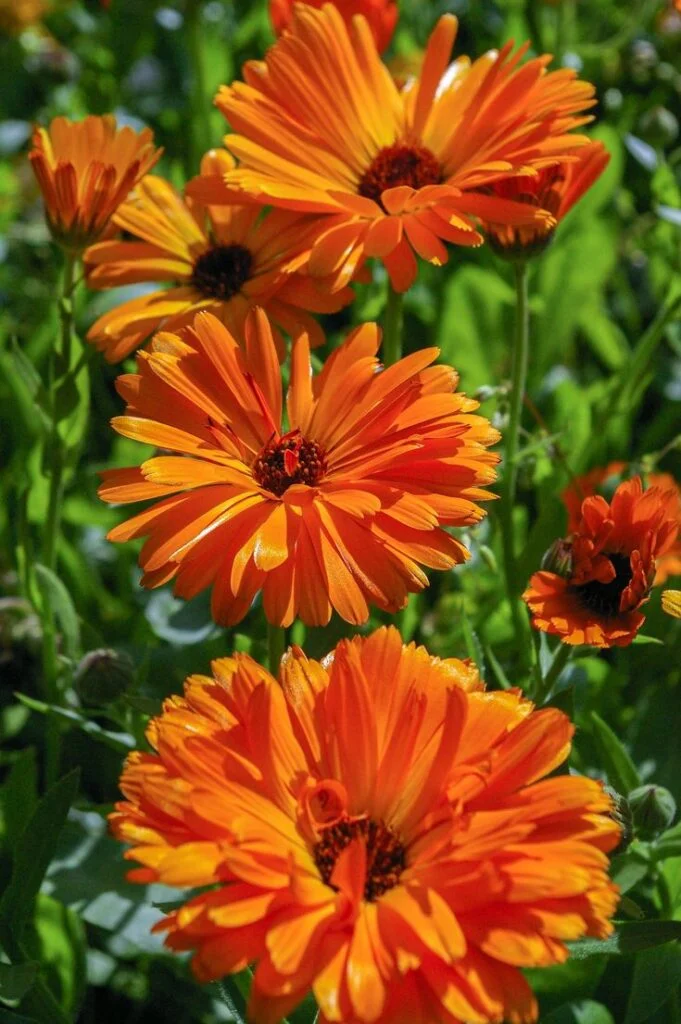
37. Calendula
- Scientific Name: Calendula officinalis
- Size: These flowers that last for a year usually grow to be about 1-2 feet tall.
- Details: Calendula is a flower that people plant every year, and they like it because it has bright and happy blooms. Plant them in soil that drains well and let them get lots of sunlight. Calendula usually has flowers from late spring to early summer, and they are bright yellow and orange. They are easy to take care of and people often use them in flower garden in winter, pots, or near vegetables.
- Best Time to Plant: It’s good to plant Calendula in the fall or early spring.
38. Bluebells
- Scientific Name: Hyacinthoides non-scripta
- Size: These plants that come back every year from bulbs usually grow to be about 1-1.5 feet tall.
- Details: Bluebells are plants that people like because they have pretty bell-shaped flowers. Plant them in soil that drains well and give them a bit of shade or full shade. Bluebells usually have flowers in late spring, and they make a nice blue or violet carpet. They are good for gardens with lots of trees, on the edges of gardens, or in shady areas, adding a touch of magic to your flower garden in winter.
- Best Time to Plant: It’s a good idea to plant Bluebells in the fall.
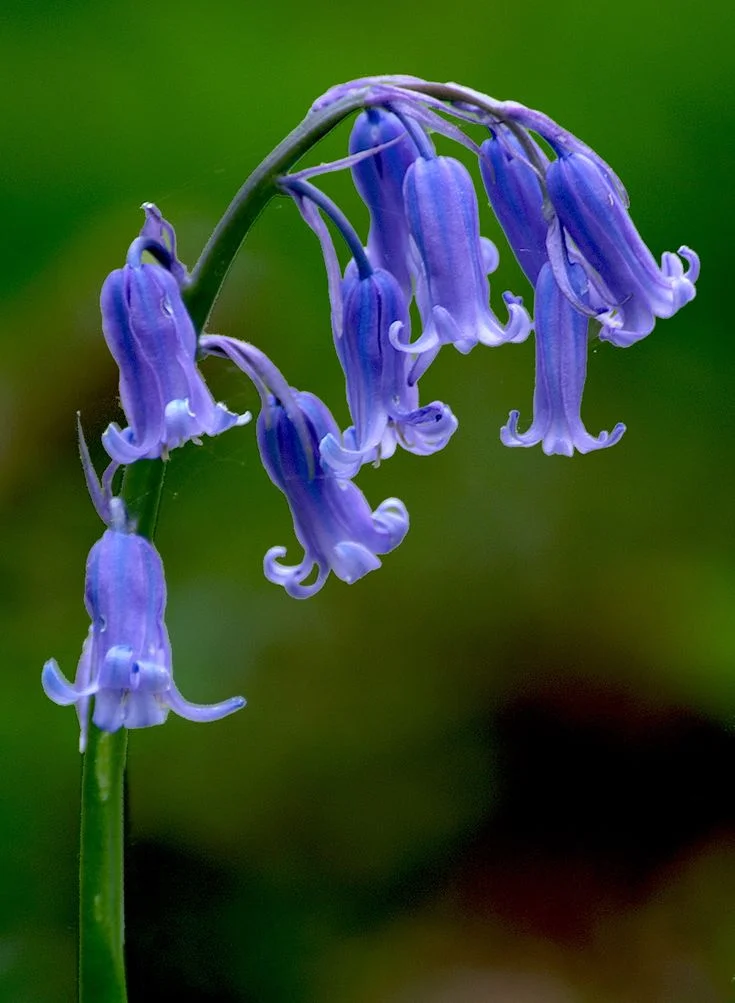
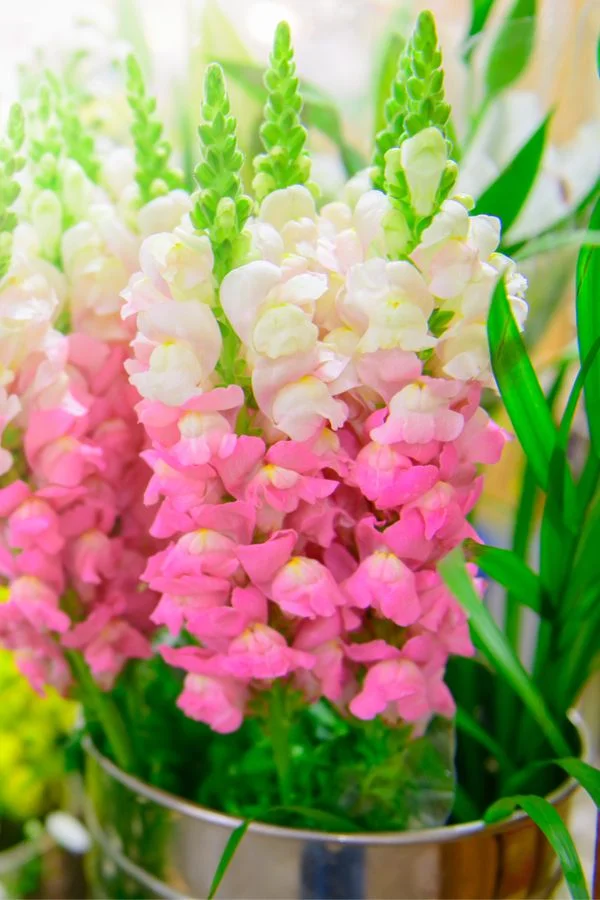
39. Snapdragons
- Scientific Name: Antirrhinum majus
- Size: These flowers that last for a year or more usually grow to be about 1-3 feet tall.
- Details: Snapdragons are flowers that look a bit like dragons when you press the sides of their blooms. Plant them in soil that drains well and let them get lots of sunlight. Snapdragons usually have flowers from late spring to early summer, and they come in colors like pink, red, yellow, and white. People often use them in gardens, on the edges of gardens, or as cut flowers, making flower garden in winter taller and more fun.
- Best Time to Plant: It’s good to plant Snapdragons in the fall or early spring.
40. Broccoli: Special Flower Garden in Winter
- Scientific Name: Brassica oleracea var. italica
- Size: Broccoli plants usually grow to be about 1.5 to 2.5 feet tall.
- Details: Broccoli, italica, is a vegetable that is good for you and tastes good too. Plant them in soil that drains well and let them get lots of sunlight. Broccoli likes cooler weather, so it’s best to plant it in late summer or early fall for a fall harvest.
- Best Time to Plant: Broccoli is good to plant in late summer or early fall for harvest in the fall or in early spring for harvest in late spring to early summer.
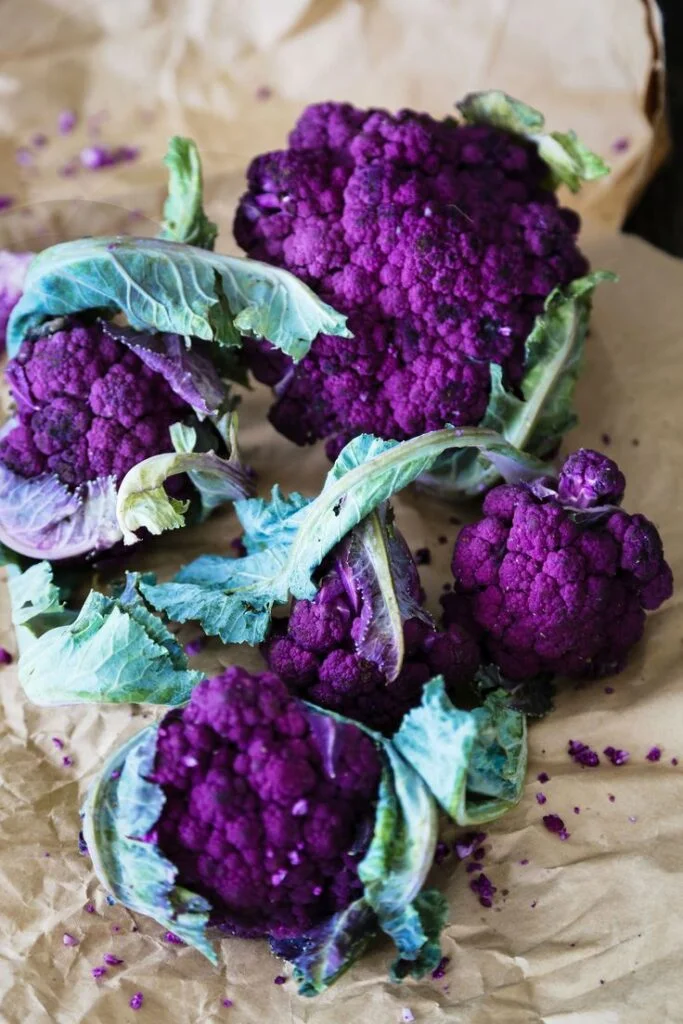
Summery of Flower Garden in Winter
Having lots of winter flowers makes it super easy to make a beautiful winter garden. I planted some of these flowers in my garden, and it made my winter nice. Winter flowers aren’t just pretty; they’re also a great way to add color and life to your flower garden in winter. Most winter flowers are easy to take care of and can survive even really cold winters. This makes them a great thing to have in any flower garden in winter, no matter where you live. These flowers can make your garden look nice, bring in pollinators like bees, and give food to bugs. Winter flowers can also make a space look cheery and friendly.

